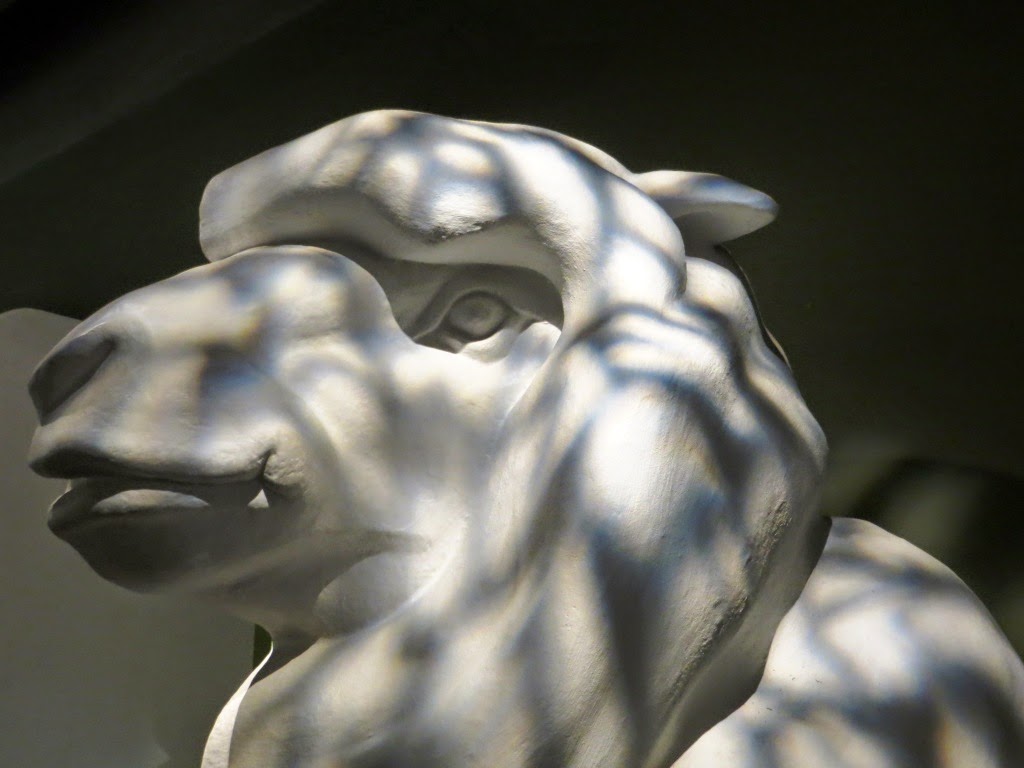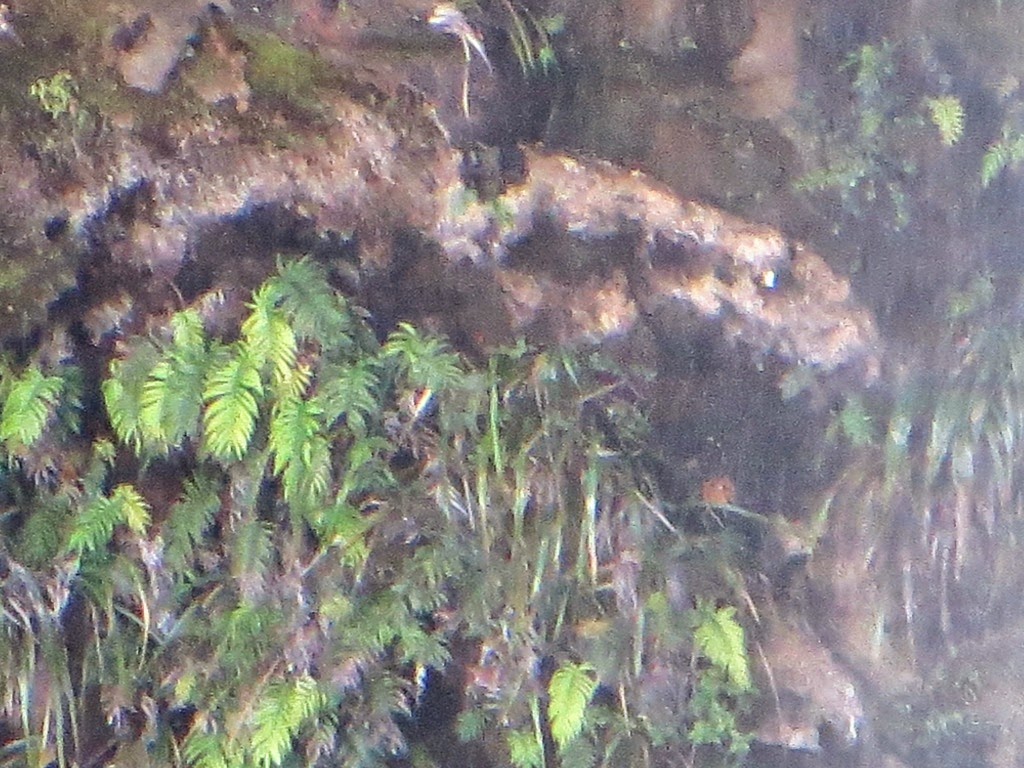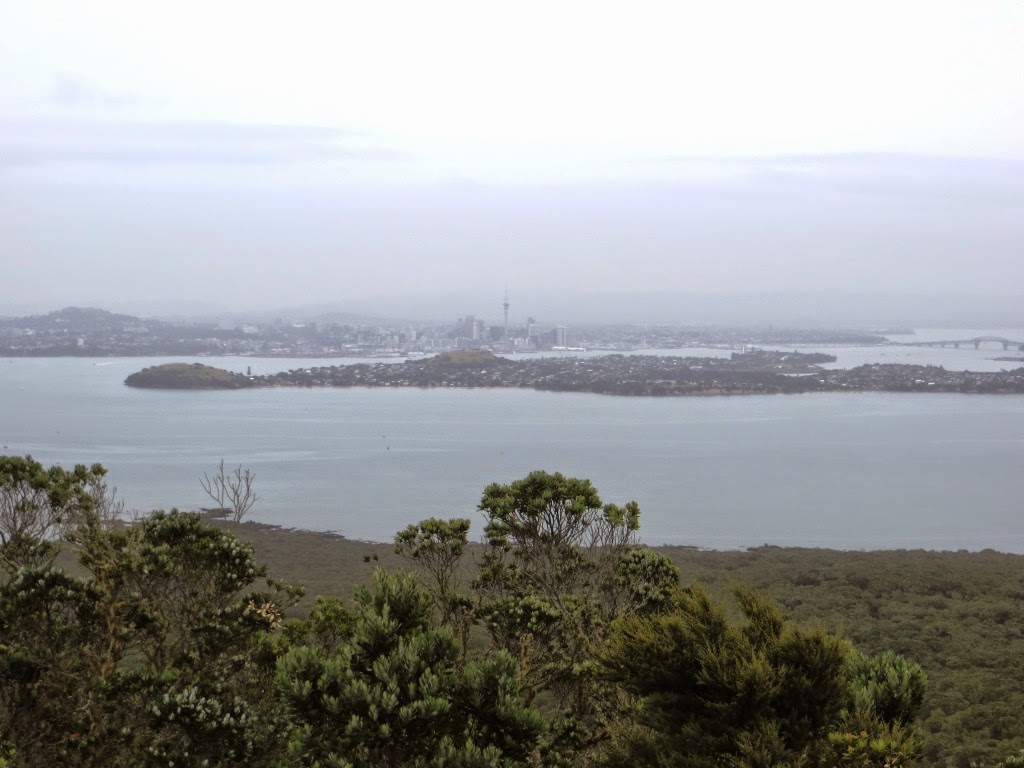S 41.17.35 E 174.47.03 Wellington
We spent four days in Wellington. Although we spent one day doing typical city things, including visiting Te Papa and then finding Minerva (New Zealand Quilter), we also got quite creative in exploring the outdoorsy bits of Wellington.
 |
| Some bits of wisdom from Te Papa (the national museum) I have to say that the Christchurch Museum is still my favorite. |
 |
| My journal quilt square which has a New Zealand Quilter connection - check here for the story |
It was a lovely walk through the green belt up to Mt. Victoria lookout even though there were a dozen big tourist buses bringing their folks up the easy way. Exploring on the way down, we even had a chance to watch bikers practice for a race the next day AND check out one of the sites for scenes from the Hobbit.
 |
| You can find cool quilty designs anywhere (on the steps going to the lookout) |
As Wellington is built on a series of extinct volcanoes and on the edge of the two continental plates, everywhere you turn there are hills with houses climbing up the edges... or there is a bit of green space to explore just around the corner from the busy city streets.
Another bus took us up and around a corner to a patch of native bush and a path through a paddock of cows who preferred the path to the impossibly vertical grass field.
 |
| Catching the train from Wellington to National Park Village (the trains are electric, btw) |
S 39.10.28 E 175.24.03 Tongariro National Park
When you take the train from Wellington to Auckland, you see scenery that you can’t see from the main highway and half way there you arrive at National Park Village. We spent a week based in this small town where the most exciting retail therapy is the small store where you can buy milk and cereal for breakfast. The view from the hostel included the three major volcanoes – Ruapehu (the tallest and where the ski resorts are), Ngauruhoe (which last erupted in 1975) and Tongariro which is the shortest of the three and last erupted in 2012. With the help of the hostel who did a great job of shuttling us to the start of tracks, we did a self managed multiday hike to check out the local waterfalls, crater lakes and also the Tongariro Crossing itself. Add in a day of mountain biking where I gained a number of bumps and bruises and lost my clip on sunnies during an over the handlebars fall, and we did about 65 km of hiking/biking over five days.
 |
| This huge kiwi sculpture was on the corner near our hostel. Apparently, the artist has made these wood and metal sculptures and placed them all over the North Island |
 |
| And the kiwi still had his Christmas lights |
So, here's the wheelbarrow story. As we started up the path to the falls, there was a sign asking hikers to help with maintenance of the path (it isn't in the national park but just a forest reserve, so I guess there is less funding) and to carry one or two buckets of gravel from the first depot to the next. We walked right past - 5 gallon bucket of gravel, uphill, rough terrain.
But as we got closer to the lookout, we saw this rusty wheelbarrow with the sign asking to help get it back down to the start of the path. Then some of those big canvas bags that drop supplies from helicopters into difficult spots. Then a lovely bit of gravelled path.
At the lookout, we visited briefly with a younger couple about the places we had hiked and were planning to hike. They headed back before us and when we got to the place where the wheelbarrow had been it was gone.... The couple had gone to the effort to get it back uphill over the roughest worst bit of the trail. Of course, Cal decided he could do his bit as well. Especially as the rest of the job was downhill and fairly smooth.
Two days later, we were biking past the trailhead and the wheelbarrow was gone.
 |
| Loved the signs. Note the difference between volcanoes and ordinary mountains. |
 |
| Two crater lakes. We actually did one day of the four day "Northern Circuit" and the Tongariro crossing was another part of the same Great Walk |
 |
| Standing, these looked like tiny purple dots. Get closer and you realize they are orchids. |
 |
| New Zealand has a thing about putting steps wherever there is a steepish up or down. And of course, everywhere is steepish up or down. |
 |
| We were making great time |
 |
| Almost half way on the Tongariro crossing in two and a half hours I'm still waiting for the bad bits... |
 |
| Straight down from the Red Crater in loose scree. Notice the people below. I didn't run down, but I also didn't do the "down on my butt" approach either. |
 |
| Watching the thermal activity while having lunch.This is where the 2012 eruption was. |
S 35.17.10 E 174.05.40 Paihia (Bay of Islands)
Fishing, hiking, beachcombing and some slow lazy mornings describes our time in the Bay of Islands. This part of the North Island is very humid and we quickly learned to go with the local way of things – don’t worry about an umbrella or a rain coat because you are already sort of damp and sweaty and what’s a bit of soft rain added to the mix. We didn’t get back to Cape Rienga because the only way was to take the full (expensive) long day tour that stopped every where between Paihia and the cape leaving little time to explore. Ah well, you can’t do everything.
 |
| This guy became bait. They were iridescent in the water and would suddenly all come to the surface when a bigger fish below was looking for food (them) |
 |
| Trevalley |
 |
| Gorgeous fish. Nickname "granddad" and a type of Groper - lovely eating if he'd been a wee bit bigger. |
 |
| These birds followed us and actually became pests as they would dive for the bait... This batch actually has one bird that was caught by the hook and had to be reeled in and then released. |
 |
| Misty weather makes great photos. Hiking on Urupukapuka Island, where Zane Gray actually had a fishing lodge in the 1920s. |
 |
| I love sheep |
 |
| Beachcombing at Paradise Bay. First time I've seen scallops and the rest of the shells are fantastically weathered. Yup, some will be finding a home on a quilt. |
 |
| Day in Russell (Kororareka) |
 |
| Finally saw a cicada - we've been hearing these fellows for months but have never seen them. |
 |
| Quail (he was out with the family) on our way to the Waitangi Treaty Grounds. |
 |
| This fellow was up in a tree and figured nobody would notice him. But our path was high on the hill... |
 |
| Washing machine token. Almost cute enough to keep as a souvenir. |
 |
| Another quilty idea. |
S 36.50.52 E 174.46.16 Auckland
We did a quick overnight in Auckland on the way up to Paihia – the hostel I had booked was not a place that we wanted to return to for our last four days in Auckland, so thanks (once again) to Nicole with Goway Travel, a quick change of plans and we have found ourselves on the 14th floor of an apartment hotel sort of overlooking the harbour. Auckland is a huge sprawling city that has almost half the population of New Zealand. We did the touristy things including two great museums (I have become quite a museum groupie) and a day hiking on Rangitoto Island which also got us a cruise in the harbour. A bit of retail therapy and one last parcel mail completed our time.
Things I will remember about New Zealand
• When we came into New Zealand, we were quite excited that our electronic chip in our passports allowed us to use “Smartgate” but sadly, that means I have no entry stamp to prove I’ve been here. We just might decide to take the long way out of the country to at least have proof we left.
• With a couple of exceptions, we have stayed at YHA hostels. New Zealand has been operating hostels since the early days and they have it figured out. We did a bit upscale in that we chose to pay for private ensuite rather than dorm rooms (hey, we are old travellers). It was a great way to people watch and get to learn about other places. YHA has, of course, a lot of young single travellers, but also folks who are settling in the area to work as well as former young single travellers (people our age who were hitchhiking around the world in the 1960’s and continue to see hostels as the way to travel) and even families (usually European, but sometimes Chinese or Japanese). I’ve gotten to depend on having a well designed commercial kitchen and fridge so that I can make meals if I wish and hostels also seem to be a great source of information and help. Will I stay in hostels again – absolutely – even though it is a bit more challenging in Canada.
• I’ve found it fascinating to observe how New Zealand’s Maori are integrated into society as it compares to Canada and also Australia. It’s Waitangi day tomorrow (February 6) which is expected to be one of those opportunities for demonstrations as well as celebrations. New Zealand is a bilingual country (even the pakahe, whites, take Maori in school) and Maori take an active role in all aspects of society.
• New Zealand TV (when we’ve been able to access it) has been an eye opener. There is no New Zealand News channel – Al Jazeera seems to be common and CNN provides the Asia feed to New Zealand. Last time we were here, we had access to Sky News (Australia) and to BBC. It certainly helps to increase your awareness of bias in reporting.
• I haven’t taken a lot of photos in New Zealand, not because it has been uninteresting, but rather because New Zealand has felt to so familiar to where we live in Canada. The weather is similar, you hike in forests that smell of pine (because most forests are tree farms planted with radiate pine), and issues of the day seem so similar. Yes, New Zealand has very little flat land and everything is either uphill or down, but it is also a former British colony established about the same time as white settlement in Alberta. For these reasons, it has been a lovely comfortable visit for the last seven weeks and there is lots left to explore, but I need to do more exploring of my own home country now.
We did a quick overnight in Auckland on the way up to Paihia – the hostel I had booked was not a place that we wanted to return to for our last four days in Auckland, so thanks (once again) to Nicole with Goway Travel, a quick change of plans and we have found ourselves on the 14th floor of an apartment hotel sort of overlooking the harbour. Auckland is a huge sprawling city that has almost half the population of New Zealand. We did the touristy things including two great museums (I have become quite a museum groupie) and a day hiking on Rangitoto Island which also got us a cruise in the harbour. A bit of retail therapy and one last parcel mail completed our time.
 |
| Maritime museum. Traditional Maori screen - thin pieces of wood (or sometimes harakeke, flax) that are stitched together with decorative colours of plant fiber. |
 |
| Hey, if you are a maritime museum, it makes sense to use knots traditional material to hold walls or shelves together |
 |
| Display on immigrants - this doll could be a relative of my Ruthie. |
 |
| Everywhere iin New Zealand you will find the silver fern motif. This one is on the hull of Black Magic, the New Zealand winner of the Americas Cup |
 |
| A very well used carry on suitcase. Mine is not quite so well loved. |
 |
| The next chapter in the "how to get a decent cup of coffee". Bought this at Bivouac from a fellow from Quebec. Lots of the retail people here are on working visas. |
 |
| View of the harbour from our balcony. Sky is not too shabby at all. |
 |
| Auckland Museum - any place that has a working treehouse in the gallery on toys has got to be fantastic. It was. |
 |
| Another sewing machine for my collection |
 |
| Bark cloth from one of the Pacific Islands. Patterns that would have been familiar to 19th century quilters, but these are drawn on whole cloth. |
 |
| Special exhibition hall had more WOW costumes. These are going on international display and if I hear that it is coming to Alberta, I'll be trying to get there. |
 |
| I love the artist's statement |
 |
| Inkling. Each item was individually made as a foam "tattoo" then attached to the costume. Picture does not do justice. |
 |
| A famous painting from WW2, commemorating an Australian medic. |
 |
| And the New Zealand note that the model was actually a Kiwi. |
Things I will remember about New Zealand
• When we came into New Zealand, we were quite excited that our electronic chip in our passports allowed us to use “Smartgate” but sadly, that means I have no entry stamp to prove I’ve been here. We just might decide to take the long way out of the country to at least have proof we left.
• With a couple of exceptions, we have stayed at YHA hostels. New Zealand has been operating hostels since the early days and they have it figured out. We did a bit upscale in that we chose to pay for private ensuite rather than dorm rooms (hey, we are old travellers). It was a great way to people watch and get to learn about other places. YHA has, of course, a lot of young single travellers, but also folks who are settling in the area to work as well as former young single travellers (people our age who were hitchhiking around the world in the 1960’s and continue to see hostels as the way to travel) and even families (usually European, but sometimes Chinese or Japanese). I’ve gotten to depend on having a well designed commercial kitchen and fridge so that I can make meals if I wish and hostels also seem to be a great source of information and help. Will I stay in hostels again – absolutely – even though it is a bit more challenging in Canada.
• I’ve found it fascinating to observe how New Zealand’s Maori are integrated into society as it compares to Canada and also Australia. It’s Waitangi day tomorrow (February 6) which is expected to be one of those opportunities for demonstrations as well as celebrations. New Zealand is a bilingual country (even the pakahe, whites, take Maori in school) and Maori take an active role in all aspects of society.
• New Zealand TV (when we’ve been able to access it) has been an eye opener. There is no New Zealand News channel – Al Jazeera seems to be common and CNN provides the Asia feed to New Zealand. Last time we were here, we had access to Sky News (Australia) and to BBC. It certainly helps to increase your awareness of bias in reporting.
• I haven’t taken a lot of photos in New Zealand, not because it has been uninteresting, but rather because New Zealand has felt to so familiar to where we live in Canada. The weather is similar, you hike in forests that smell of pine (because most forests are tree farms planted with radiate pine), and issues of the day seem so similar. Yes, New Zealand has very little flat land and everything is either uphill or down, but it is also a former British colony established about the same time as white settlement in Alberta. For these reasons, it has been a lovely comfortable visit for the last seven weeks and there is lots left to explore, but I need to do more exploring of my own home country now.



















































No comments:
Post a Comment